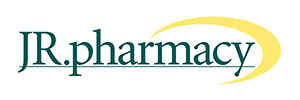The importance of margin in the retail area of pharmacy is often dismissed/ignored on the basis that the total store has remained profitable.
Over the last decade there has been a proliferation of community pharmacies discounting retail products in the pursuit of customer growth.
The JR.pharmacy averages highlight that the margin given away in retail has deepened the losses made in the area which has been disguised by the rising gross profit dollars per script achieved through stronger trading terms and higher substitution over the same period.
In the face of unpreventable reductions in the GP$ per script, retail sales and more specifically the retail margin and average retail sale must be viewed as an opportunity to make up some of the difference.
Over the last two financial years (FY12 and FY13) we have seen a stabilisation of the retail GP% at 34.5% which highlights to me that we have hopefully seen the bottom of the cycle in terms of trying to chase customers on price alone. In my view this margin needs to increase to 37%+ for sustainable profitable growth.
Opportunities to grow GP% include:
- Buying right;
- Pricing correctly;
- Leveraging Known Value Items;
- Increasing the basket size.
Buying Right
The role of the stock controller in the pharmacy should not be underestimated. They are investing your cash and from that a return must be generated.
Two main points should be their focus:
- Are they buying/stocking what the customer wants in sufficient quantities? Whatever discount they gain on buying certain stock will be quickly lost if the customer does not buy it and it remains on the shelves unsold. If profitability begins to fall in the next 6 months, this ‘dead stock’ will suffocate cashflow. Understanding what the customer is coming to the pharmacy for is therefore paramount;
- Are they maximising the net into store buying opportunities with either the wholesaler or manufacturer? Often not buying the right order quantities or at the wrong times will reduce buying discounts which is a missed opportunity. There is a balance though because the pharmacy cannot afford to be out of stock in ‘key’ categories that the customer expects pharmacy to stock. If it is out of stock, that is an invitation for your customers to shop the competition.
Pricing Correctly
- Knowing your local prices and being competitive on certain lines is a key to retailing in the 21st century. Local prices now include on-line but remember community pharmacy remains to a large extent a convenience retailer so those customers that shop on-line are happy to wait for their delivery.
- In understanding that the bricks and mortar pharmacy is a convenience retail offer, the pricing must be based on better before cheaper. In other words, better known (branded) products that are keenly priced but not cheap.
Leveraging the KVI’s
The Known Value Items have an important place in driving customer traffic and creating a customer perception of your price competitiveness. Therefore it is imperative to understand the difference between categories and products that drive traffic as opposed to those that drive profit.
The staff in the pharmacy must have a clear understanding of the difference and when they are engaging with a customer must look for the opportunity to switch from the KVI to either a product of better quality for the customer’s needs or looking to add to the customer’s basket with an additional product that will improve the customer’s outcome and the profit of the pharmacy.
Note I am not suggesting a private label switch. This can only occur if the customer is indifferent to the brand. Understand what they have asked for on entering the pharmacy and avoid offending them with a private label switch in the pursuit of margin protection.
Bringing it all together
The table above is based on a client example where seven of their ‘key’ categories showed the GP% was lower than both the JRP all pharmacy average and the JRP turnover based averages.
By lifting the GP% to either the total average or the turnover average highlights that in 2013, this pharmacy had a missed opportunity of retail GP$ of approximately $30,000. Any or all of the above opportunities can be used to lift the retail GP%.
In the face of profit reduction in the dispensary this presents a great opportunity to review and maximise the retail profit by reviewing performance compared to averages.
Remember using the data is important, but interpreting it and acting on it is the challenge because there is more than one thing that can influence the outcome.
Norman Thurecht, Partner, JR Pharmacy Services






